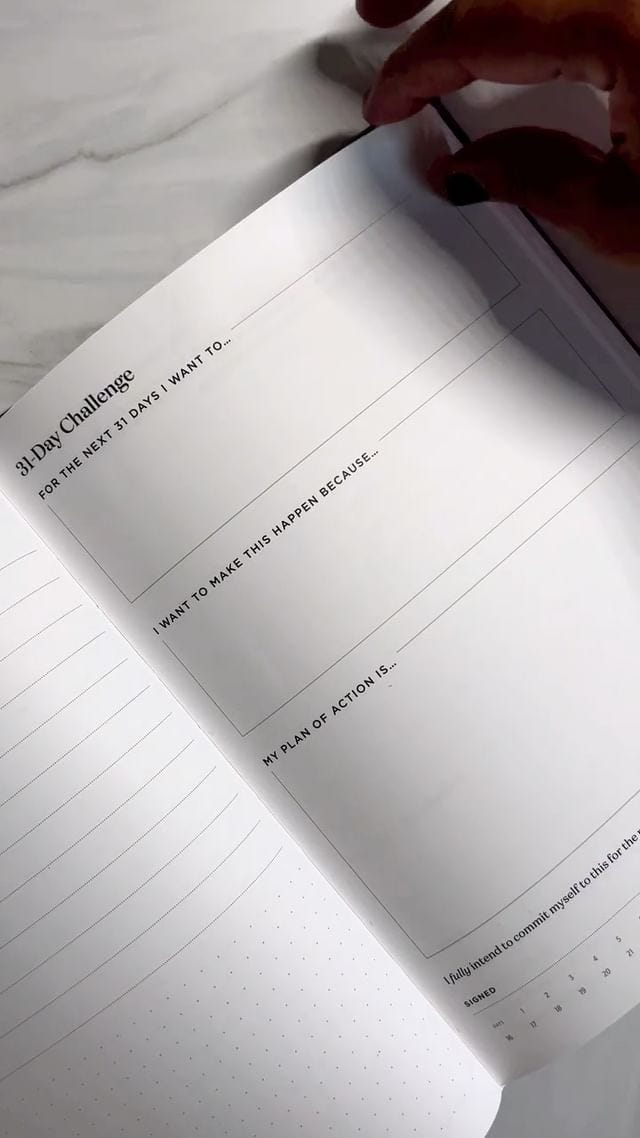The blank page has always been exciting to me, and what is the start of the new year if not a brand-new notebook—crisp, blank, and waiting for possibilities? Plus it comes during a season ripe for reflection and pause. If I can’t find the spare moment to consider what I want to accomplish in the coming year now, then I won’t when the cold thaws and spring brings its activities, events, and work travel.
There’s an inherent utility and power in resolutions. Resolutions are traditionally formed to improve your lifestyle, shed a bad habit, build a good one—they’re the building blocks of goals, a means to the end. Resolutions are process; goals are destinations. Resolutions are especially perfect for writers who’d benefit from starting, revising, or even renewing a consistent writing habit.
If resolutions are the impetus to make small steps towards a larger goal, this year I want to work backwards before I begin assigning them to 2023: What are my writing goals?
What are yours?
How Do Your Goals Serve You?
My writing goals have always been big bites; not impossible, but big. And yet…I haven’t accomplished even the first step towards these goals, namely publishing a book (a big enough goal on its own!). I’ve come further along this road than at any other point, but the other day, I was struck with a question that seemingly came from nowhere: How are my goals serving me? A goal is a signpost, a destination. But if my destination is Bali and all I have are two pennies, I don’t even have the means to get in the taxi to catch the plane, let alone buy a ticket and enjoy myself on vacation. How about the goal of setting aside a vacation fund first?

So I started to peel away the gold foil of my Big-Time Writing Dreams to examine what lay underneath. What do most writers dream of? Bestselling success, literary acclaim, status, money, writing so much and so well you can do it for a living. I always assumed I’d happily, greedily take all those if they were within my grasp, but come to think of it—really, critically think of the everyday reality of it—I also like my job. I like the variety of work, the mix of travel thrown in, the environment that’s conducive to learning and socializing and enjoying the city. Yes, a job takes time away from writing. But writing is fed by experiences and the real world.
A couple other things in 2022 let me think more critically of what I’d define as “writing success:”
The stats for traditionally published authors are not dismal, but they certainly pale in comparison to my Big-Time Writing Dreams. If you didn’t read my previous newsletter “Writing: the Original Long Game”, then for example: Only about a dozen debuts “break out” every year, i.e. sell 30,000 hardcovers or 50,000 ebooks. Debut authors should expect to sell 3-5,000 copies (or less, according to other stats).
The stats for self-published authors are more positive, plus the outcome is more controllable (depending on how you market, how much and when you publish, etc.), but still: the average self-published author who earns six figures has published 40 books, per Joanna Penn’s The Creative Penn podcast. The authors spend an average of 25 hours writing a week, and 17 hours on marketing and other writing-adjacent tasks.
The final piece of new information in 2022 that led to the question, How are my writing goals serving me? was this: in an episode on The Creative Penn, an author said her own goal is to collect 50 rejections in one year.
What a concept! See how that folds multiple resolutions into one? You need to write enough, first, to submit your work. Then if you get lucky or perhaps aim for low-hanging fruit, you certainly will publish up to 50 pieces a year—but you haven’t reached your goal of 50 rejections, which means you’ll need to challenge yourself: push for publication in more prestigious outlets, write more to submit more, all the while improving, getting your work out there, edited, read. Your ideas evolve. Have you ever sat on an idea for so long, waiting for the “right moment” to bring it out? At some point it changes from “marinating” to “stale,” but if you need to mine ideas to reach 50 rejections, there’s much less chance of those ideas going stale.
Building Better Writing Resolutions for 2023
50 rejections is a lot for someone who doesn’t freelance, and it’s not the goal for me. All my writing time would be devoted to those submissions instead of working on books. But the idea of creating a goal that builds in multiple steps or resolutions to achieve is how I want to form my resolutions for 2023. (While I love making New Year’s resolutions, it always takes me about a week to hone in on them.)
A sizable portion of my past New Year’s resolutions have been about building a writing habit: write every day no matter how long, as long as I do it; write 5 days a week; write for at least 10 hours per week. These have served me well, and I wrote a novel from them. But they aren’t conducive to the kind of success in those above stats, which require a lot more time than I’m currently devoting (and no small amount of luck). Because my current writing habits don’t serve my larger-than-life goals, it can feel like I’m getting nowhere, even though that’s not true.
The way I see it, the more detailed your resolutions, the more they restrict you. That’s not always a bad thing. That structure might be exactly what you need, and it’s a great way to explore new goals in its own right. For example, in 2022 I wanted to “do something artistic/creative” at least 3 times a week, and it didn’t matter whether I finished anything or not, how long I did it, or even what exactly I worked on, because the point was the act of creating.
On the other hand, you might be at a point where you’ve nailed down good habits, like I have, and wish to get somewhere with them. Defining a goal first and leaving room for flexibility and freedom towards reaching it is more helpful than defining the process and achieving multiple, undefined outcomes.
So again the question: How are your writing goals serving you? Like the 50-rejections goal, I’d like a lower level signpost first and the resolutions that will let me get to that point. I haven’t thrown out my Big-Time Writing Dreams; they’re just on a higher shelf. Goals are meant to be layered. Achieving each one drives you to the next, higher goal. And, crucially, they’re meant to be flexible: the final destination may not be what you initially set out for, but it’ll be a more refined, thoughtful, and ultimately satisfying definition of success than you’d originally planned.
Stuff I Like
Ink + Volt goal planner: This is the best long-term goal-planning tool I’ve seen. The timeline is one year broken into monthly calendars, and the planner starts with thoughtful prompts about goals and values and why you want to accomplish them. It helps you categorize your goals as top and secondary (perfect for someone like me with many, many lists of things to accomplish so I get scattered and unfocused), and each month guides you to list the small steps you need to make in order to progress towards your goal.



